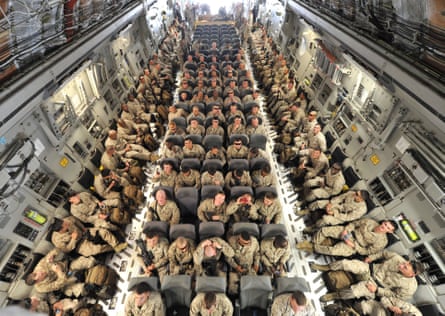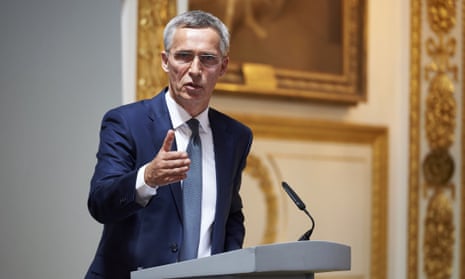Sceptism greeted the Nato secretary-general when he claimed the transatlantic bond that glues Nato together is not weakening but actually strengthening.
The sentiment was expressed at Lancaster House in London where Jens Stoltenberg made the remark to an audience of mainly defence and foreign policy specialists. And the scepticism would almost certainly be shared in capitals across Europe.
Doubts have been fuelled by growing nervousness about Donald Trump’s visit to the Nato summit in Brussels on 11 and 12 July.
The fear is the US president might react in a the same way he did after the G7 summit in Canada. There were his testy exchanges with the German chancellor, Angela Merkel, the rows with Europe over trade and Iranian nuclear policy, and his repeated assertion that the US is fed up of bailing Europe out and it is time Europeans started paying a bigger share of their own defence.
Inconceivable as it still seems to military chiefs in Europe and the US who have worked together for decades, the break-up of Nato hangs in the air: that Trump might just walk away and take the US with him.
What would happen if the US was to leave Nato?

The US forms the core of Nato. With the biggest defence budget in the world, The US contributes senior officers, troops, money and equipment to Nato.
The biggest Nato military engagement has been in Afghanistan and that is an indication of the disproportionate role of the US. Of the 130,000 Nato forces in Afghanistan at the height of the conflict, 100,000 were American.
Even at present, US forces are having to fill gaps left by European nations, including the UK with its spending constraints. With concern, for example, about increased Russian activity in Norway, the US is sending in its marines, filling a gap left by Britain’s Royal Marines who had regularly held exercises in there.
Without the US, European forces confronting Russia would look thin. If Russia was to send a large proportion of its more than 20,000 tanks across its borders into eastern Europe, a combined force made of the UK, France, Germany, Italy, Spain and the other Nato remnants might struggle to stop them with conventional forces.
Nato forces deployed in the Baltic states and elsewhere in Eastern Europe at present know that if they are overrun, they can confidently expect the US to come to their rescue.
So a Nato without the US would leave Europe vulnerable to a Russian attack?
A Russian invasion is highly unlikely because, in spite of a recent splurge on defence spending, the 2014 annexation of Crimea and various provocations such as cyber attacks, it is a declining power, in contrast with China.
The crux is, even if Russia’s conventional forces were to overcome the massed ranks of European tanks, armoured vehicles, planes and missiles, it would be left confronting two nuclear powers, the UK and France. And that is deterrent enough.
Is it likely that Trump will pull out?

Trump has been working his way through the various pledges he made on the White House campaign trail. A repeated mantra was criticism of Nato, describing it as obsolete and, with the US no longer as rich as it once was, no longer value for money.
He pointed out the US spends 3.5% of GDP on defence while only three other countries out of the 29 that make up Nato did the same: the UK, Estonia and Greece.
Trump’s rhetoric – combined with the increased activity of Russia – seems to have worked and Stoltenberg says eight countries are now expected to reach the 2% target. The Nato chief hopes this statistic plus other concrete proposals for increased military capabilities will help deflect Trump at the summit.
Could the European Union have its own defence force?
European countries at various points have proposed an EU defence force, arguing that a European foreign and military policy independent of the US might prove a good thing.
But this has met with little enthusiasm so far.
The UK has been the main opponent within the EU of such a force, saying Nato already filled that role. But, with the UK about to leave the EU, its objections will no longer matter. Turkey, a Nato member but not of the EU, would also be excluded.
Could the US leaving Nato have a beneficial effect?
A European force independent of the US has a lot to commend it.
Nato blundered after the cold war in failing to embrace Russia and antagonised it by expanding into the former Soviet bloc countries. That is irreversible but it might make it more unlikely that remaining countries, Georgia, which Nato is to give an initial nod to at the summit, would find it harder to be embraced by a EU force.
An EU force might be less likely too to engage in military operations outside of Europe.
